Globalization defined
In economics, “globalization” (often abbreviated as “G11n”) is the process of worldwide interaction and integration among people, companies and governments. It can be regarded as a form of capitalist expansion that integrates local and national economies into a global, relatively unregulated market economy. The formation of global markets has become more feasible with the removal of cross-border trade barriers. With increased interaction comes the growth of global trade, culture and ideas.
Rapid advances in transportation and communication technology in the past 150 years have been primary drivers of globalization growth. Transportation innovations include the steam locomotive, the steamship and container ship, and the jet engine, while the telegraph, satellites, mobile phones and the internet have revolutionized communications. These inventions have been major factors spurring growth of globalization and have increased the interdependence of economies and cultures around the world.
Product globalization
“Globalization” is also an industry term specifically referring to the preparation of products and services to be offered in multiple markets and countries. It takes into account the many components of doing business globally, including language and cultural differences, measurement standards and time zones.
The process of globalization may require modifications to many components of a product or service, including but not limited to electrical standards, measurements, packaging, technical documentation, online help, user interfaces and legal agreements. These modifications are necessary so that it can be legally sold and used in multiple markets.
An example of the complexities of the process is Spanish globalization, which refers to the preparation of products to be launched in all Spanish-speaking countries throughout the world. Although they share a common language, each country is culturally unique. Companies ignore these significant differences at their own peril.
Components of globalization
Globalizing a product comprises two distinct operations, commonly referred to by companies like IBM and Oracle as “internationalization” (or “I18n”) and “localization” (“L10n”). Sometimes, the portamanteau “glocalization” is used to describe this process.
Internationalization is the component of globalization that takes place in the earliest stages of product development, during the design phase. It involves anticipating the needs of global markets and preparing a product to be compatible in those markets, in order to reduce overall localization costs later.
Localization occurs after the design of a product is finished, and involves translating text and other media or local languages, and also adding other market-specific components.
Examples of internationalization
Products and services intended for multiple markets will require different levels of internationalization, depending on their market segment, technical sophistication and several other factors.
Instruction manuals can include more illustrations, so that the total amount of text, all of which must be translated into multiple languages, can be significantly reduced. Furniture manufacturer/retailer IKEA has taken this to an extreme, providing assembly instructions with virtually no text at all.
Written content to be translated into many different languages is generally internationalized before being localized. All local idioms, names, jargon or customs, and specific geographic references are removed or modified to make the content as culturally neutral as possible. Undertaking this process first increases the ease with which it can be translated into the target languages.
A case where internationalization is especially important is a company’s Standard Operating Procedures (SOP), instructions that a business organization follows for executing routine operations that are complex and thus prone to error. Companies with multiple branches around the globe first put together an internationalized SOP in English, then adapt versions in other languages so that all employees can understand and comply with the same procedures.
Localization components
The localization process itself is made up of multiple smaller components, which can be grouped roughly into the categories of “translation and “engineering”.
Translation is formally defined as the communication of meaning from a source-language text to an equivalent target-language text. Translation doesn’t usually take into consideration any cultural symbolism or conflicts that arise from source content that might have a double-meaning or not make sense in the target language.
Engineering refers to a variety of actions that may be performed on the non-textual components of products or services.
The computer-aided translation process
Computer-aided translation (CAT) software is often employed to facilitate accurate and consistent language translation. With CAT tools, translation becomes an interactive process. CAT tools make efficient content recycling possible through the use of Translation Memories (TM), as well as terminology management features and other linguistic tools.
A TM is a special database that aids human translators by storing previously-translated language “segments”. These can be whole paragraphs, sentences, or smaller fragments for headings, titles or list elements. The source text and its translation are stored in language pairs (for example, English-English-Chinese, English-Vietnamese). While TM’s are generally developed and maintained by the localization partner, they remain the property of the client.
The use of Translation Memories reduces localization costs, though the amount varies dramatically across different industries. When localizing similar products, the savings can be dramatic.
For many products, translation is the most important and most time-consuming component of globalization. Thus, it is vital to choose a translation service with the requisite tools and expertise to produce the best possible results.
Engineering tasks
In addition to translation of written materials, additional non-textual components of products or services may also need to be re-engineered. Process that fall into the general category of engineering include:
- localizing language (for example, substituting the British “s” for the American “z”, as in “localisation”);
- substituting photographs, charts or other graphics in place of text;
- editing graphic materials to avoid any cultural conflicts;
- changing date, time, measurement and temperature formats;
- inserting appropriate geographic references;
- adding or modifying telephone numbers and addresses;
- selecting appropriate colors to match local sensitivities;
- converting monetary amounts into local currencies;
- adhering to local gender roles.
Putting it all together
To summarize, the process of product or service globalization includes internationalization and localization. Localization in turn comprises translation and engineering practices. A successful globalization campaign relies on getting all of these components correct.
Selecting a localization partner should be done with care, and should be viewed as a long-term partnership. Multi-language localization vendors (MLV’s) are worldwide organizations that are able to produce high volumes of localized content in multiple languages. Single-language localization vendors (SLV’s) are generally smaller companies with offices in one target company that specialize in a single country or language. For simpler projects, a freelance translator can be employed at less cost but greater risk.




